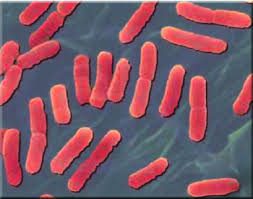Fate and Transport of Micro-organisms in Air
When ozone and hydrocarbons usually ethylene alone with the oxygen act together the inactivation rates of microbes is greatly affected. Micro-organisms like fungi cannot survive and complete their life cycles by staying afloat in air for an indefinite period of time. Bioaerosols in the air harbor the microbes.
The atmosphere is inhospitable place for microbes because of stress due to environmental factors like desiccation, temperature, relative humidity, radiation and oxygen. The majority of airborne micro-organisms are immediately inactivated as the result of this.
Those hardy microbes that can survive these factors are able to cause the diseases. Oxygen stress relates to the reactive oxygen species. Another term, Open Air Factor (OAF) in this connection describes the environmental effect that cannot be replicated in the laboratory settings.
They vary in size. Large droplets in the air are of 100 μ and like dust, settles rapidly in quiet air. Small droplets on the other hand in warm, dry atmosphere dry quickly to form droplet nuclei. These are of 2-5 μm size, light and may float about for many minutes or even hours.
The micro-organisms in them are protected by dried mucus which coats them. Being small, these escape the mechanical traps of the upper respiratory tract and enter the lungs. They may settle on the alveolar tissue. Transmission of airborne pathogens usually occurs via droplet nuclei.
The aeromicrobiological pathway (AMB) describes the launching of the aerosols in the air, the subsequent transport via diffusion and dispersion, and finally their deposition e.g. droplet nuclei having influenza virus which is launched via coughing, sneezing or taking in the air.
Read Also: Air Microbiology and Causes of Air-Borne Diseases
Fate and Transport of Micro-organisms in Air

The fate and transport of microorganisms in air is a complex and multifaceted field that involves understanding the processes governing the movement, survival, and deposition of airborne microorganisms.
This field is of significant importance in various sectors, including environmental science, public health, agriculture, and biodefense. Here’s an expert-level explanation of the key concepts:
1. Fate of Microorganisms
The fate of microorganisms in air refers to the ultimate outcome or destiny of these biological entities once released into the atmosphere. Microorganisms can be emitted into the air from various sources, such as soil, water bodies, vegetation, or human activities.
Common microbial agents include bacteria, viruses, fungi, and other pathogens. Fate encompasses processes such as emission, suspension, transformation, and removal. Understanding these processes is crucial for predicting the behavior of microorganisms in the environment.
2. Transport of Microorganisms
Transport involves the movement of microorganisms through the air over time and space. Microbial transport is influenced by atmospheric conditions, including wind speed, turbulence, temperature, and humidity. Microorganisms can travel over short distances or be dispersed over long distances, depending on these factors.
Aerosolization, the process of generating airborne particles or droplets containing microorganisms, is a key mechanism in microbial transport. Once aerosolized, microorganisms can be carried by air currents to different locations.
3. Survival in the Atmosphere
Microorganisms face various challenges in the atmosphere, such as desiccation, exposure to ultraviolet (UV) radiation, and temperature fluctuations. Their ability to survive these conditions determines their fate during transport.
Some microorganisms have specialized mechanisms to resist environmental stresses, allowing them to persist in the air for extended periods. For example, certain bacterial spores and fungal conidia are well-adapted to withstand harsh conditions.
4. Deposition and Removal
Deposition refers to the settling of microorganisms from the air onto surfaces. This can occur through gravitational settling, impaction, interception, or diffusion.
The type of surface, atmospheric conditions, and the characteristics of microorganisms influence deposition rates. Surfaces such as vegetation, soil, and water bodies can act as sinks for airborne microorganisms.
Removal processes are essential for understanding the potential impact of airborne microorganisms on human health and ecosystems. The deposition of pathogens onto surfaces may contribute to the spread of diseases or contamination of water and food sources.
In summary, the fate and transport of microorganisms in air involve a complex interplay of biological, physical, and environmental factors.
Researchers in this field employ a multidisciplinary approach, combining microbiology, atmospheric science, and environmental engineering, to better understand and model the behavior of airborne microorganisms in diverse settings.
This knowledge has implications for public health, agriculture, climate science, and the mitigation of infectious disease outbreaks.
Read Also: Farming and Care Guide of Rapeseed



